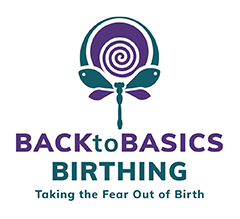Contact Vicki
If you have any questions or would just like more information please don't hesitate to get in touch by clicking the button below and filling out the contact form.
Contact Vicki
One of the important physical aspects of the body during pregnancy is the pelvis.
Your pelvis is not one fixed bone; it is made up of 4 separate bones:
The joints are held together by ligaments that become soft and flexible in the later stages of pregnancy with the release of the relaxin hormone.
This allows the joints to move and accommodate the descending baby during birth.
Surrounding the pelvis are really important muscles and ligaments, which help to stabilise the pelvis, but one of the most important and least treated is the psoas muscle.
Sometimes when there is an over-abundance of relaxin, the fibrous cartilage at the front can become unstable causing the front of the bones to move up or down and this can create sharp pain right up through the groin.
This condition is called Symphysis Pubis Dysfunction or SPD.
In this case it is a good idea to see a pregnancy physiotherapist and wear a support belt while having regular pregnancy massage, particularly around the adductors, glutes (bottom), hips and legs.
The round ligament connects the front part of the uterus to your groin and would normally relax and tighten slowly.
Before pregnancy this ligament would usually be short and stubby, but once you become pregnant and your baby grows along with your uterus this ligament stretches to as thin as a lackey band, and about 10cms long. This can put a lot of strain on the ligament and any sudden movements can cause the ligament to tighten quickly and spasm causing a sharp stabbing pain.
Due to the sharp, stabbing nature of the pain experienced, it can be very concerning to mums, but it should only last for a short time, but the pain can be intermittent and return at any time. The pain can be experienced on both sides, but most times the pain is felt on the right hand side of the pelvis or abdomen as your uterus rotates slightly to the right.
Wearing a support belt and seeing a women’s health physiotherapist can help alleviate or eliminate discomfort.
The broad ligament extends from the sides of the uterus to the sides of the pelvic walls and to the pelvic floor. It is found in a loose fold of the perimetrium (outer layer of the uterus) that attaches the uterus, fallopian tubes and ovaries to the pelvis.
The function of the broad ligament is to stabilise and hold the uterus in its normal position.
It is rare to experience broad ligament pain, and in early pregnancy this is a symptom of ectopic pregnancy and must be checked to rule out anything sinister.
Pain associated with the stretching of the broad ligament is felt on the sides of the pelvis and hips and may also refer pain to the back and buttocks especially during the sixth and seventh months of pregnancy.
The uterus grows from a small lime sized organ in the pelvis to reach the xiphoid process by the eighth month.
This growth affects the ligaments which support the uterus in the pelvis. These ligaments are formed from external uterine connective tissue and as they stretch, pain can be caused in the pelvic area depending on where the ligaments are attached.
One of these culprits is the sacrotuberous ligament. This ligament of the sacroiliac joint stabilises the sacrum and is found in the lower and back area of the pelvis. It runs from the sacrum and the upper coccyx to the tuberosity of the ischium at the back of the pelvis.
When this ligament is stressed, it becomes thick, tight and shortens, which then pulls the coccyx and ischial tuberosity together.
When this happens, it becomes so much harder for a baby to move down into the pelvis because of the reduction in opening size.
This can then prevent labour starting or cause a long labour with little to no progress. This may then be diagnosed as failure to progress and lead to a caesarean section.
The psoas muscles (pronounced so-as), helps to stabilise the pelvis, but also sends messages back to the central nervous system.
The psoas major muscles are quite large muscles and are the only muscles that connect your spine to your leg on either side of the spine.
The psoas connects from the last four vertebrae of the spine between the pelvis and the ribs and then wraps around to the front of the pelvis and drops down to attach at the lower end to the top of the thigh bone.
The psoas is shortened more so during pregnancy due to the anterior pelvic tilt (when you arch your lower back inwards) as your uterus expands, baby grows, and you are carrying more weight.
During pregnancy, the psoas contributes to pain through the lower back, groin, adductors and can even cause weakness due to the extra pressure from the weight of the uterus.
Being in a sitting position for long periods of time can shorten the psoas muscle causing pain and tension in the pelvic floor, the hips and the spine.
It can also affect the space in the abdomen, affect the alignment of the skeletal system and limit the range of motion in the spine, pelvis and legs, which in turn will limit the functionality of birthing positions such as squatting. It can also cause the disks in the spinal cord to compress and also shorten the hamstrings and calf muscles.
The psoas plays a significant role in how a baby is positioned and can be a reason a baby stays in the breech position, as it can prevent the hips from extending and restrict the opening of the pelvis.
During all stages of pregnancy, I highly recommend that you have a pregnancy massage with a qualified Pregnancy Massage Specialist to release your psoas muscles and ensure all your muscles and ligaments are in optimum condition for labour and birth.
Having regular pregnancy massage will also aid in a quicker and easier recovery after birth.
I cannot stress highly enough that if at any time you are concerned about your body or your baby, please contact your health care providers to be checked. They are there to give you peace of mind and ensure that everything is going well so please don’t wait to find out.
If you have any questions or would just like more information please don't hesitate to get in touch by clicking the button below and filling out the contact form.
Contact Vicki